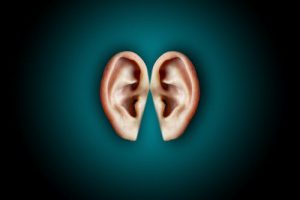Table of Contents
How to choose a Good Quality Hearing Aid For a Child?
According to WHO statistics, the number of hearing impaired people in the world is 466 million, a large number of both adults and children, which makes the issue of hearing aids relevant.
So, every person who is faced with the problem of hearing loss, the question arises: “How to choose the right hearing aid?”
Given the number of models on the market from numerous manufacturers, this is not an easy task.
But it is worth recalling that a hearing aid is not just another gadget and not an “earpiece”, but a medical device that is used only if there is an evidence and on a recommendation of a doctor.
So the choice of a device will differ from how most people choose their sleep measure devices, smart watch or other technical devices.
The Types of Hearing Aids
Hearing aid (HA) manufacturers offer these types of hearing aids:
Analogue hearing aids – the principle of operation is to convert sound waves into an electrical impulse, which is then amplified and transmitted to the structures of the inner ear.
It is important to note that the budget of this segment often attracts the patient with its low cost, but the limited technical capabilities of analog models can NOT reproduce the entire “sound palette” for the patient
Digital HAs are devices that convert sound waves into a sequence of specific numbers.
Sounds are captured, processed and the already digitized sound is converted by a special program, after which it is fed into the speaker of the device in the form of waves.
Digital hearing aids are not as budgetary as analogue ones, but the possibilities in hearing correction are much greater.

Digital CAs are subdivided as follows:
By the number of channels – there are mono-channel, 3-channel, 5-channel, 12-channel, etc.
The more channels there are in the hearing aid, the “reproduced hearing” will be closer to the natural full-fledged hearing of a person;
By type of structure:
BTE hearing aids – models that consist of a part that is attached behind the ear and a part that is inserted into the external auditory canal;
- Intra-aural hearing aids – devices that are inserted into the ear canal like wireless headphones, are made from a cast of the patient’s ear; processor, battery are located inside the device;
- In-ear hearing aids – devices that are completely placed inside the ear canal, are also made according to an individual impression, the constituent elements are also placed inside the device
- In-ear hearing aids – devices that are completely placed inside the ear canal, are also made according to an individual impression, the constituent elements are also placed inside the device.
How to determine which hearing aid you need?
Just like a general first kit aid, when choosing a hearing aid, the patient should, of course, familiarize himself with the different variants of devices on the market, but still follow the recommendations of an audiologist.
A correct conclusion, correct diagnosis and adequate recommendations are possible only after examination by an audiologist who diagnoses and corrects hearing impairments.
The doctor will take into account:
- The degree of hearing loss, which is unilateral, bilateral, is different in each ear, which will significantly affect the tactics of correcting hearing;
- Frequency ranges that need additional correction; thus, for some patients, the multi-channel CA will be a decisive factor in choosing a model;
- Patient characteristics (concomitant diseases, age characteristics, etc.).
Children and Hearing Aids
Parents who are faced with the problem of hearing impairment in a child for the first time have many questions.
Let’s try to answer the most popular ones. These are the questions our specialists get at the reception most often.
Hearing impaired children are a special group of patients. In children, hearing is lost during the formation of speech, which can be fully formed only if the child is able to hear the entire range of sounds, and especially the range of spoken speech – factors that affect the quality of the selected hearing aids.

Hearing Aids for children choose digital, multichannel ones that reproduce sounds in the full range.
No less important factor will be the durability of the device and ease of use, therefore, more often children are
OUR TOP PICKS OF HEARING AIDS FOR CHILDREN
In the situation of hearing aids for pediatric patients, it is also extremely important to work with deaf educators who will help the child adapt to AS, “rebuild” the brain’s work, taking into account new conditions, and will also help form the child’s speech – skills that will help in the harmonious development of the child and socialization in circle of peers.
Can hearing aids cause hearing impairment?
Toddler with Hearing Aids Modern children’s hearing aids are high-tech digital systems, essentially small computers that adjust precisely to the changes in hearing, remove unnecessary noise and highlight speech.
Correctly selected and tuned digital hearing aids not only do not harm your hearing, but also prevent its further deterioration.
But, unfortunately, in about 30% of children with hearing impairment, hearing loss progresses during the first year of life…
What should you look for when choosing a hearing aid for your child?
There are points that are important to understand if you decide to choose a hearing aid for your child yourself.
First, you need to know the exact extent of your child’s hearing loss. The required hearing aid power depends on this:
- low power – 1-2 degree of hearing loss;
- average power – 2-3 degree of hearing loss;
- high power – 3-4 degree of hearing loss;
- superpower – for individual cases, 4 degrees of hearing loss.
The next thing to consider is the type of hearing aid you wear. Immediately, we note that hearing aids for children with intracanal and in-the-ear hearing aids is recommended from the age of 12.
The child’s body grows rapidly, the structure of the auditory canal can change quite quickly, so we recommend using behind-the-ear hearing aids.
When the child grows up, it will be enough for you to change the silicone earmold:
While when using an in-ear or in-ear device, you will have to change the entire case.

Can my child’s hearing be better?
Conductive hearing loss caused by impaired sound conduction is usually reversible.
The causes of conductive hearing loss are sulfur plugs, otitis media, dysfunction of the auditory tube.
Such changes in hearing do not need separate correction. As soon as the cause of the disturbance in sound conduction is eliminated (for example, the function of the auditory tubes is restored), the hearing loss will also disappear.
Hearing is an extremely important tool in learning about the world around you, especially for a child who is just entering a big life.
His communication skills, learning skills and development in general depend on how well he will hear, therefore it is very important to approach the issue of hearing aids with complete seriousness.
